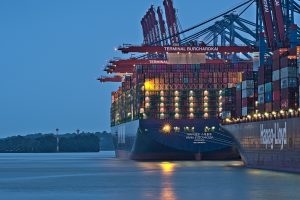When you are looking for a white-labelled enterprise-grade Ocean Freight Management Software, there are a few requisite features you must look out for before opting for one. Ocean Freight Management Software provides powerful and flexible collaborative tools to maximize productivity and reduce costs of Freight Forwarders.
With such challenging market conditions and growing competition in the industry, It is important to adopt a sophisticated Ocean Freight Management Software solution that allows will them to effectively manage their entire business.
What Is Ocean Freight Management Software?
Ocean Freight Management Software specializes in arranging the whole process for their shippers to move freight between one destination and another via cargo ships. The idea came when freight brokers teamed up and started using a transportation management software system to move beyond their one-for-one transactions. It could consolidate a heap of transactions that can be used to perform activities and predict events. The synthesized data was used for preparing reports for intense analysis. It helped shippers save freight rates and operational expenses.
Importance of Ocean Freight Management Software
Supply chain management has become complex, It requires a robust solution that can allow companies to quickly meet their customer’s needs efficiently while elevating their business strategies and executions. When you have an efficient management solution in place, it leads to leaner inventories, in-time manufacturing, omnichannel distribution strategy, maximized customer satisfaction, reduced operational costs, and tightened delivery windows.
1. The route, load, and transport optimization
Your software must eradicate the key problems that a transportation business has to deal with all the time. Depending on a specific constraint, type of destination, vehicle limitations, and traffic, your software should be able to build safe and clear routes for faster delivery.
Enterprise software development companies usually incorporate routing tools such as google optimization tool or MapQuest that are integrated with an API that quickly connects to Ocean Freight Management Software easily. Your load planner tool can quickly calculate the size, weight, class, warehouse, & many more.
2. Regulation and document management
The transportation industry relies on documentation, the software must be robust enough to manage complete freight-related paperwork. The document management is segregated into –
Tariffs and regulation management
These kinds of documentation involve international, air, and sea shipping papers, such as waybills, bills of lading, packing lists, certificates of origins, and dangerous goods notes. Digital bill of lading and e-AWB integrations can help shippers ensure that goods are compliant with government regulations, incoterms, and 3PL agreements, as well as seamless sync with TMS.
Accounting
Accounting is imperative for any business, where a few businesses, like logistics and transportation management business, have to manage every day.
Claim management
One of the major risks in a freight or transportation business is the loss or damage of the shipment. Companies associated with different carriers have to comprehend as well as align with different rules set by each. Instead of manually addressing them, the right logistics management software can standardize the process claims.
The digitized claim management enables companies to quickly respond to the damage caused after verifying the documents depending on domestic or international shipments.
3. Data Gathering and analytics
The shippers are associated with multiple carriers and other logistics providers. A reliable solution not just helps in making stronger & better connections but also helps in optimized costs. Data gathering and analytics feature can allow shippers to –
- Relate to consumer patterns and make adjustments accordingly.
- Compare costs of different modes of transport and choose the right one.
- Track down carriers and partners (KPIs) to underline which one is performing better.
- Allocate warehouse bays.
4. Tracking and Tracing Shipments
Transportation is a kind of business that demands tracking and tracking the location of its goods as well as a vehicle to ensure reliable and timely delivery of goods. A good and most commonly used way to track shipment is through GPS. Other than GPS, barcodes and RFID are also used.
GPS tracking
The GPS-incorporated vehicle leverages the shipper to observe every movement of the vehicle. The technology sends current location data to the parent company. When the technology is combined with the electronic logging devices (ELDs) and telematics, a shipper can retrieve detailed information, such as driving style
- Fuel consumption
- Toll records
- Open door sensor
- Temperature inside trailers, & much more.
This type of data can help in scheduling or general visibility to avoid delays or share information of the driver with the customers.
Barcode and RFID tracking
This technology can be used to provide precise and detailed tracking, which includes – each parcel, pallet, and even the containers received with barcodes or RFID chips. RFID chips and barcodes can be quickly scanned and send the status of the shipment to the client to ensure the deliverance of the goods.
Here, predominantly EDI solutions and API integrations are used to make the exchange of information between different systems real quick.
With Barcode or RFID tracking technologies, large enterprises can have quick and detailed visibility into their valuable data for further analysis. The data can be transformed into insights using TMS and then applied for making operational improvements.


 What Is Airline Reservation System? Everything You Need To Know
What Is Airline Reservation System? Everything You Need To Know